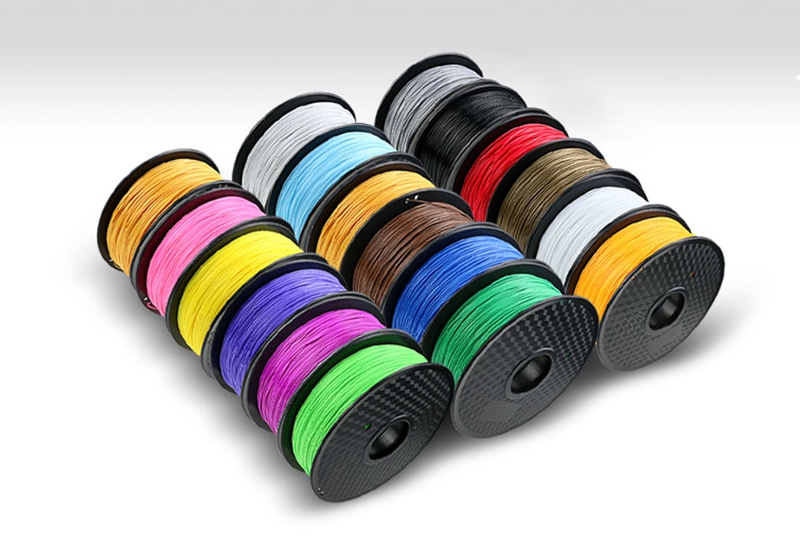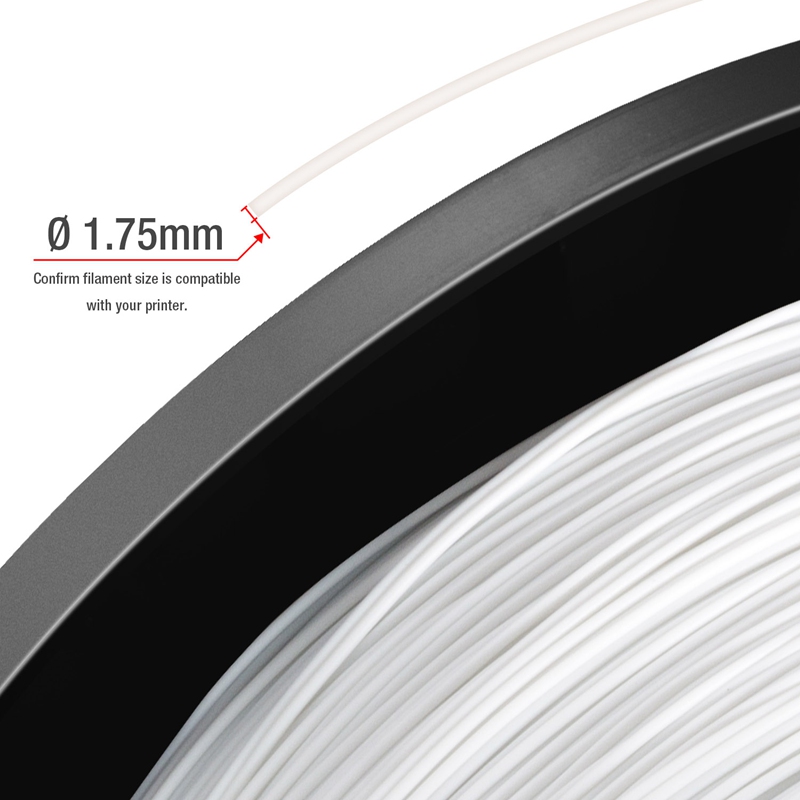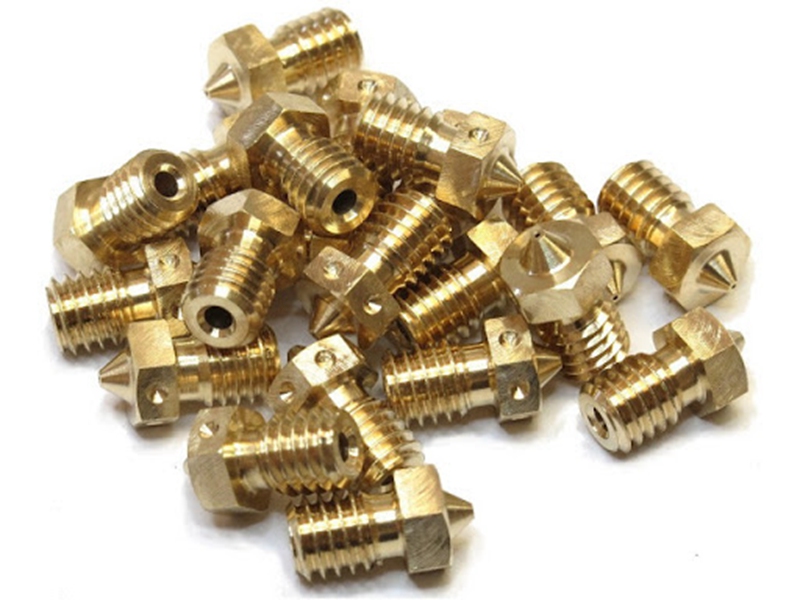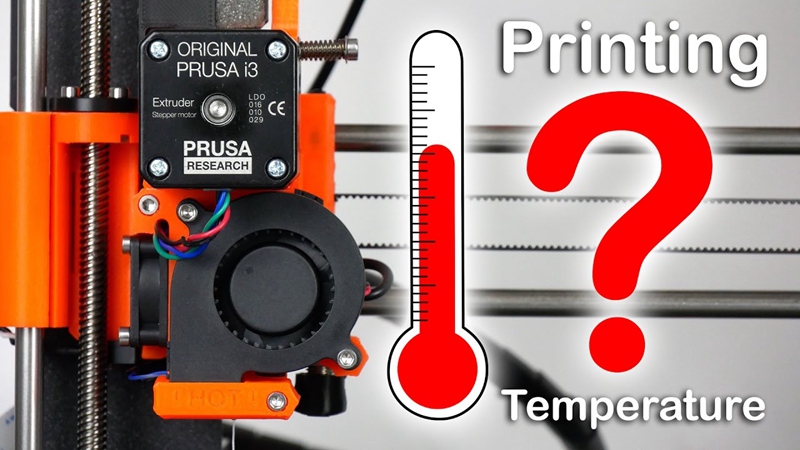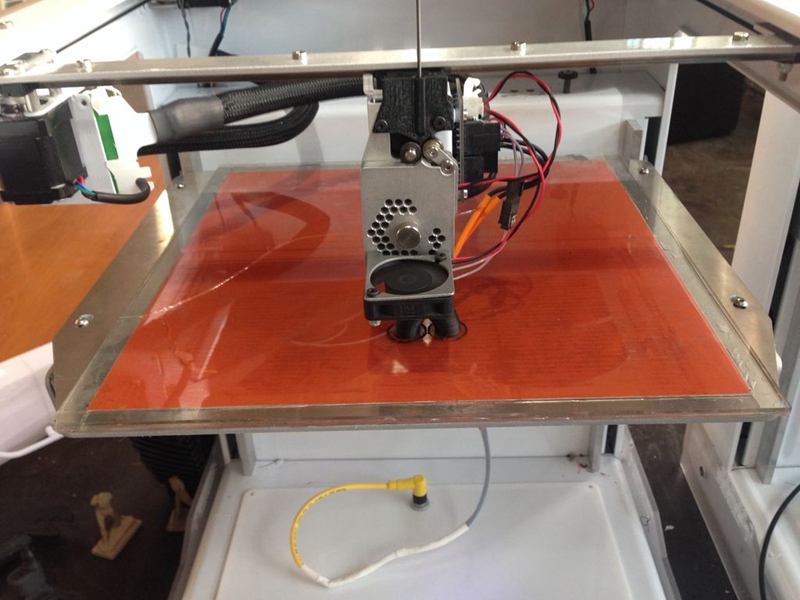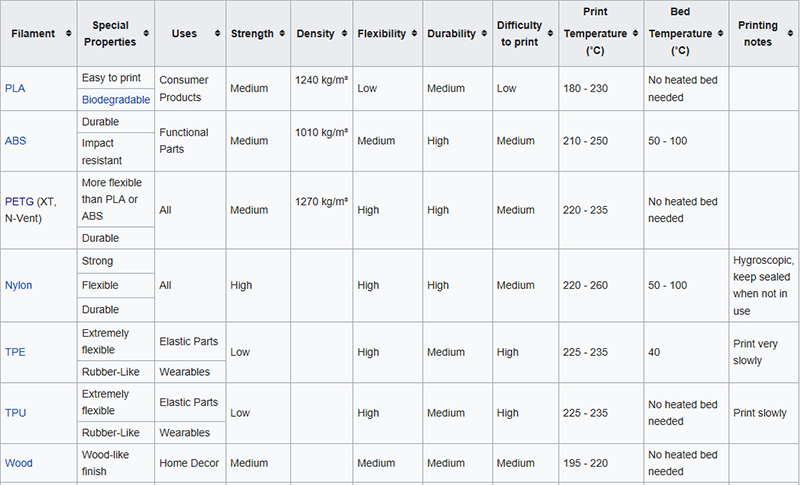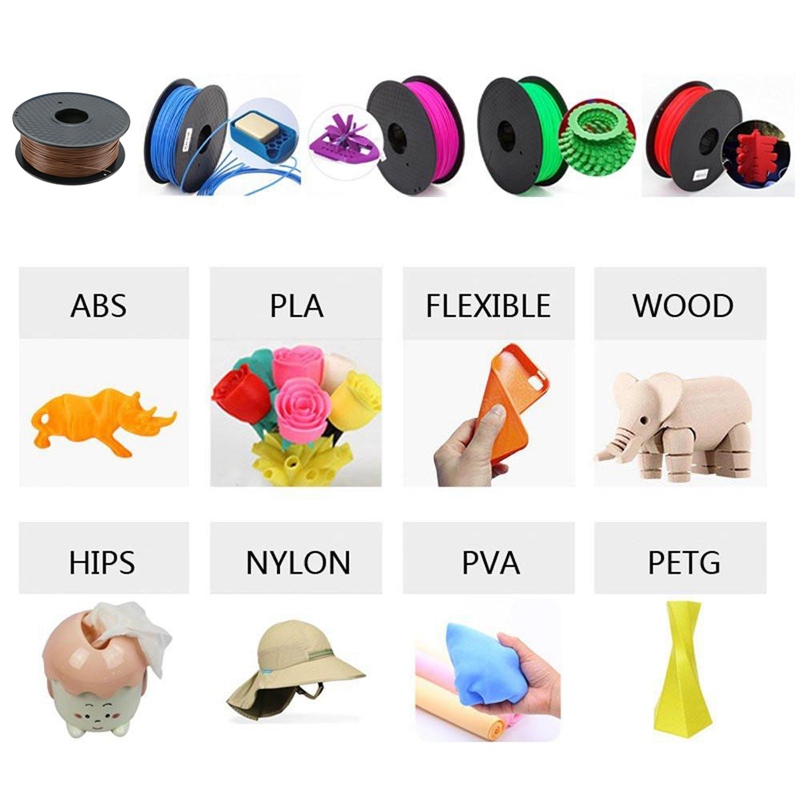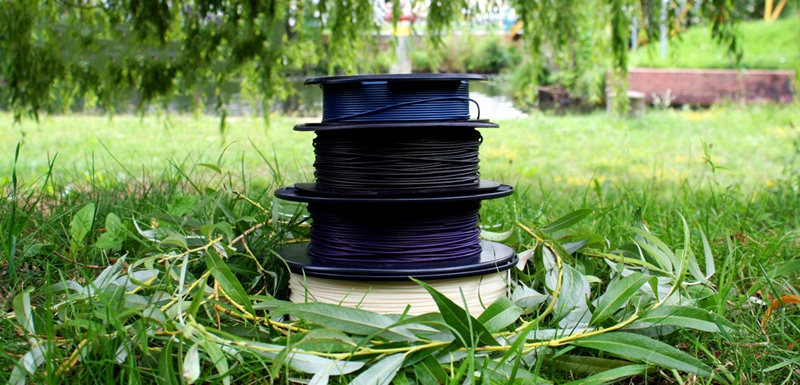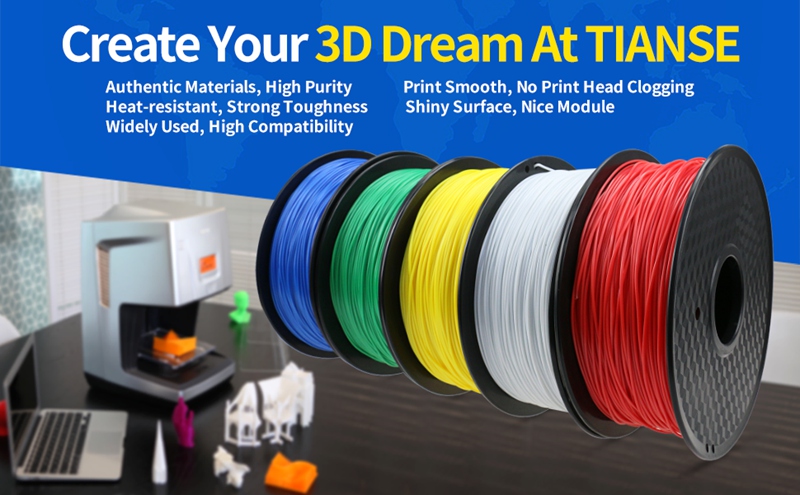Great prints start with great filament! 3D printer filament is a crucial component for any 3D printing project. Choosing the right material is an important step for getting the optimum print results. However, faced with numerous choices of different filaments, plastics and properties, it’s not always easy to find the right one. A lot of different features and factors need to be taken into account, and TIANSE will give you some easy tips on how to choose 3D printer filament.
The choice of 3D printer filament is obviously related to the 3D printer you own. Each printer has its own specific features and will not accept every filament available on the market. You therefore need to take into account certain features of your 3D printer before choosing the right material.
Filament Diameter Consistency
Let’s start with filament diameter: 1.75mm, 2.85mm or 3mm. Most filaments available are either 1.75mm or 2.85mm in diameter, which fit the majority of 3D printers on the market. Apart from this, it’s also important to look into the tolerance and roundness specifications of the filaments. The tolerance is a measurement of how much larger or smaller the diameter of the filament can deviate from the indicated size at any given point. Roundness, which is a measurement of deviation expressed as a percentage, shows how consistent the shape of the filament is. For example, TIANSE 1.75mm 3D printer filament has a tolerance of ±0.03mm and a roundness of >95%.
Material of Printer Nozzle
The material of the printer nozzle affects your choice of the filament type. Brass nozzles are most widely used to print common materials such as ABS, PLA, and Nylon. If you want to print corrosive or abrasive materials, it is better for you to choose a stainless steel or tempered steel nozzle respectively.
Maximum Extruder Temperature
Your printer’s maximum extruder temperature also matters, as each filament is fused at higher or lower heat. For example, PLA has a printing temperature of between 190℃ and 220℃, while that of ABS is around 220℃- 260℃.
Presence of Heating Plate
It is advisable to have a heating plate for certain filaments, so as to avoid the detachment of parts, for example, a heating plate is needed when printing ABS or ASA filament.
Next, let’s have an overview of the common 3D printer filament types, such as PLA, ABS, TPU, PETG, Wood filament. You can refer to An Overview Of The Common 3D Printer Filament Types for more details.
(An Overview of The Common 3D Printer Filament Types, Source: Wikipedia)
The choice of filament is not only dependent on the features of your 3D printer and the properties of the filament itself, it is also related to the prints you want to produce, from mechanical, aesthetic, utilization, and environmental perspectives.
Mechanical Perspectives
If you want to get a solid and impact-resistant part, you would prefer ABS or Polycarbonate filaments. Nevertheless, if you want to obtain a flexible or semi-rigid object, TPU or TPE-based materials can suit your needs since these materials create parts that are easily shaped. Thus, it is important to know what the 3D printed part will be used for before filament purchase.
Aesthetic Perspectives
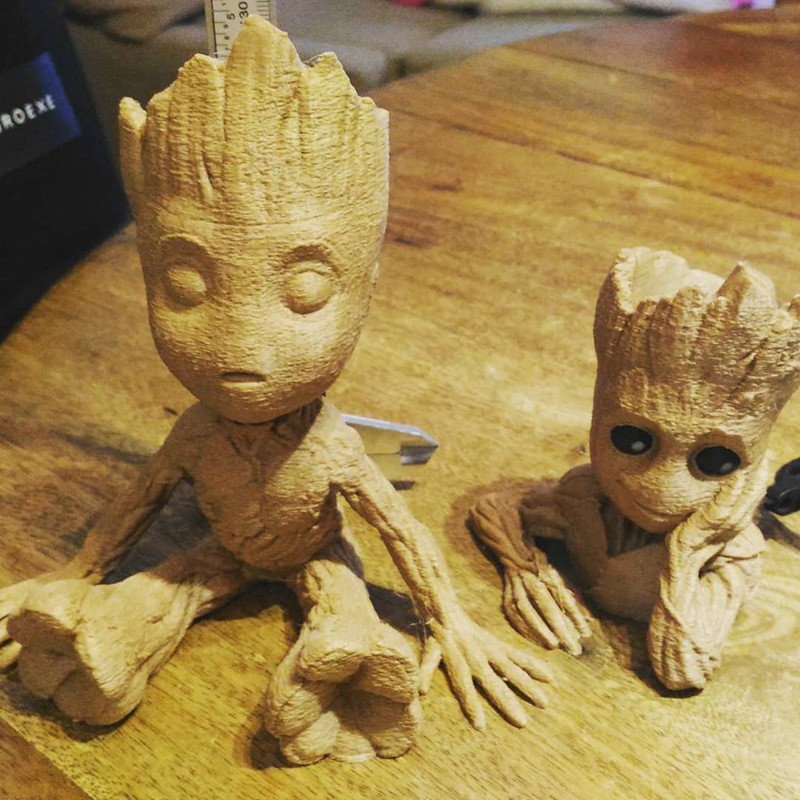
(Source: juha3dbar / Instagram)
It is also vital to know what finish you want to get: mat or glossy? To be smooth or to be translucent? Currently, there is a wide range of hybrid materials available on the market, normally composed of a PLA base and another material such as wood, cork, cement or brick, which give the filament a completely different aspect and therefore a different finish, both in terms of color and texture.
Environmental Perspectives
The choice of 3D printer filament also relates to the environment in which printing is to take place. During fusion, certain plastics emit toxic Volatile Organic Compounds (VOCs), which can be harmful in a closed environment over the long term. For such filaments, it is advisable for you to use an enclosed 3D printer or to print outside, for instance, ABS is a typical example. You should also check if your filament is sensitive to moisture or humidity and if it should be kept in a dry environment.
Advice from TIANSE 3D
To choose the 3D printer filament that most suits your needs, TIANSE 3D recommends you to try out several different filaments. In this way, you can establish their various possibilities and what you actually need. Test different printing parameters as well: play around with printing speed, extrusion temperature, the use of supports, and more.
Last but not the least, if you are a novice in 3D printing, we recommend you use TIANSE PLA 3D printer filament as your starting point since it’s the easiest one to print. As one of the most commonly used materials in FDM 3D printing market, PLA performs very well during 3D printing and is available in a wide range of colors. Moreover, it is biodegradable and more eco-friendly than ABS.
Selecting the right filament can be a challenge, but our team at TIANSE is always here to help. If you don’t know which filament to choose or you need some advice, just feel free to contact us, we will be more than happy to recommend the right material to suit your needs! We also hope you can learn something useful from above tips on how to choose 3D printer filament.
Post time: Apr-04-2019

